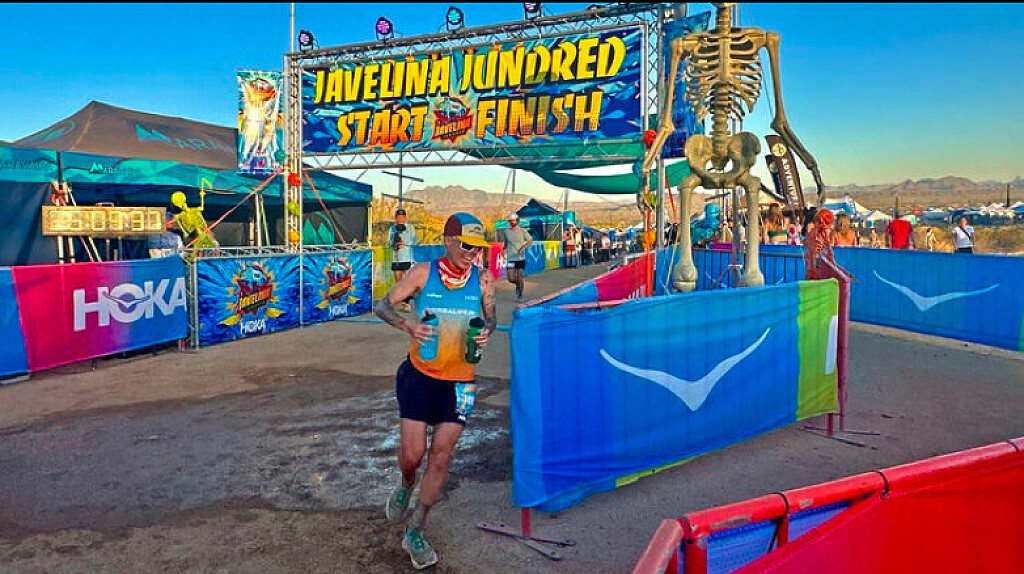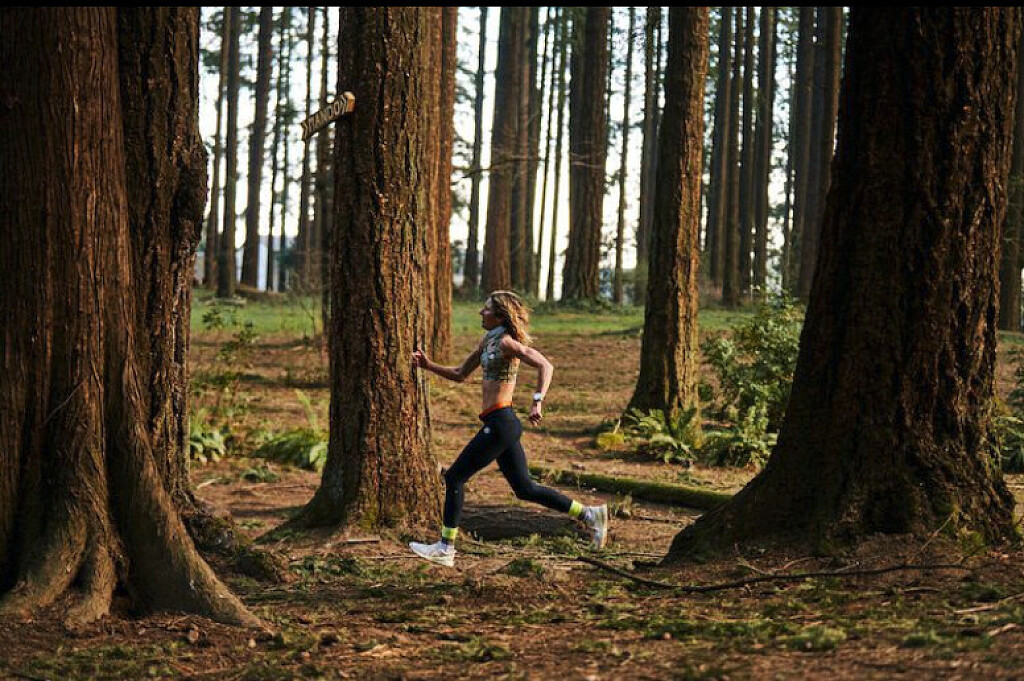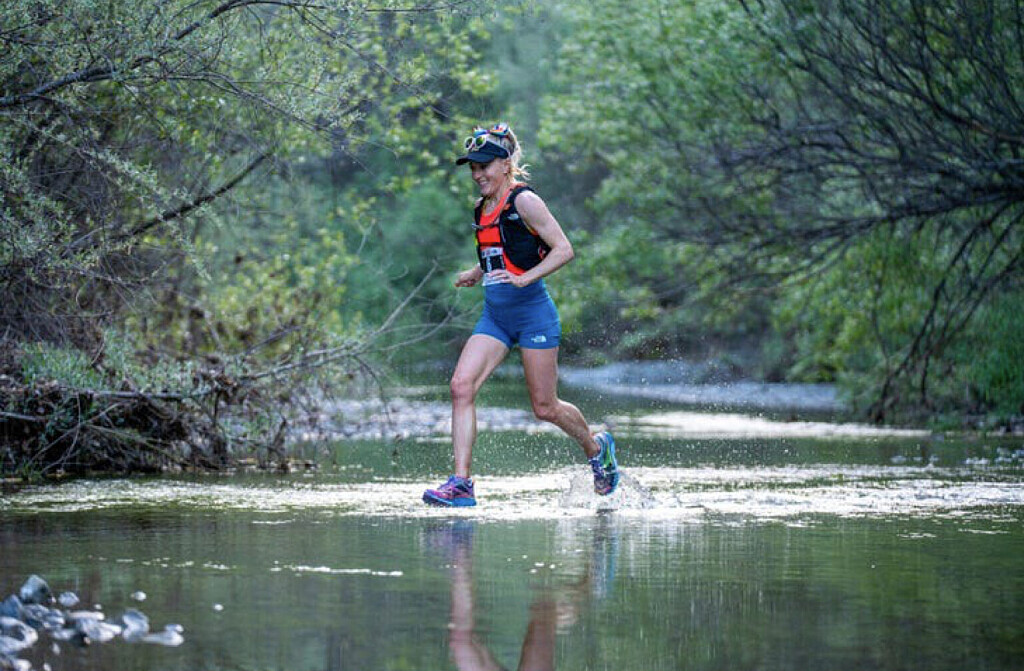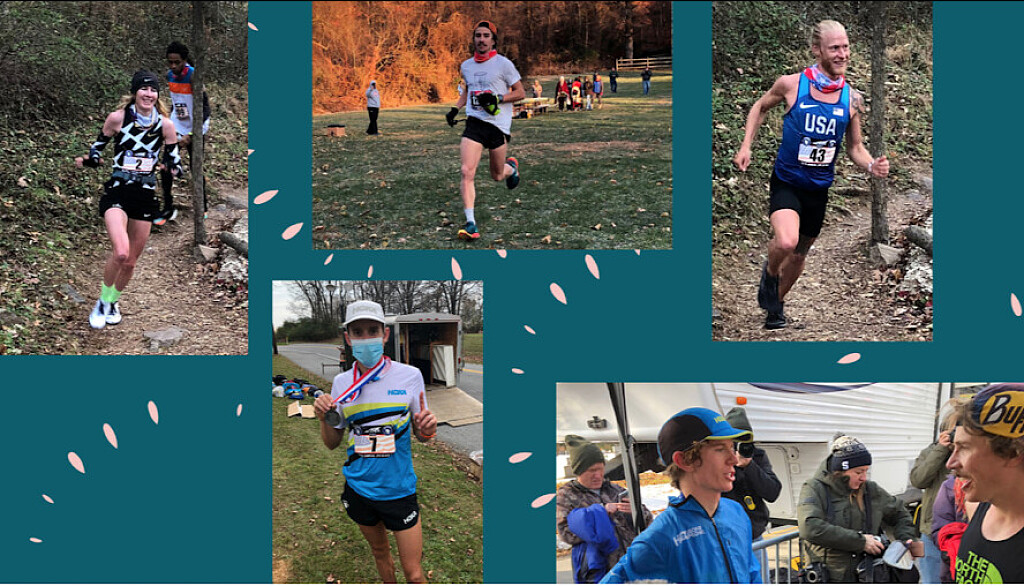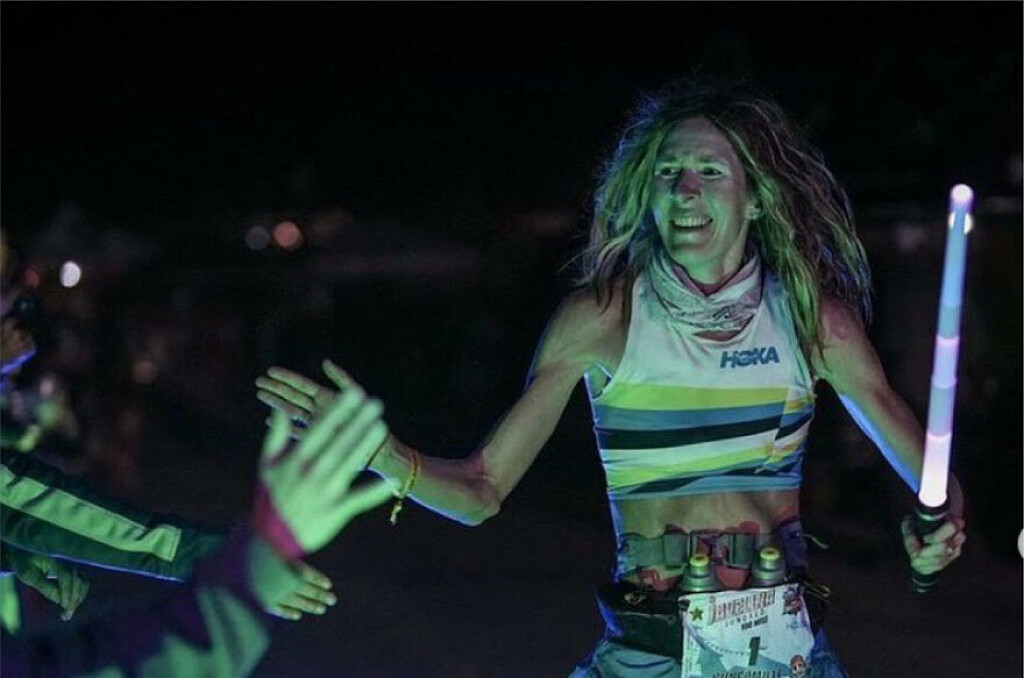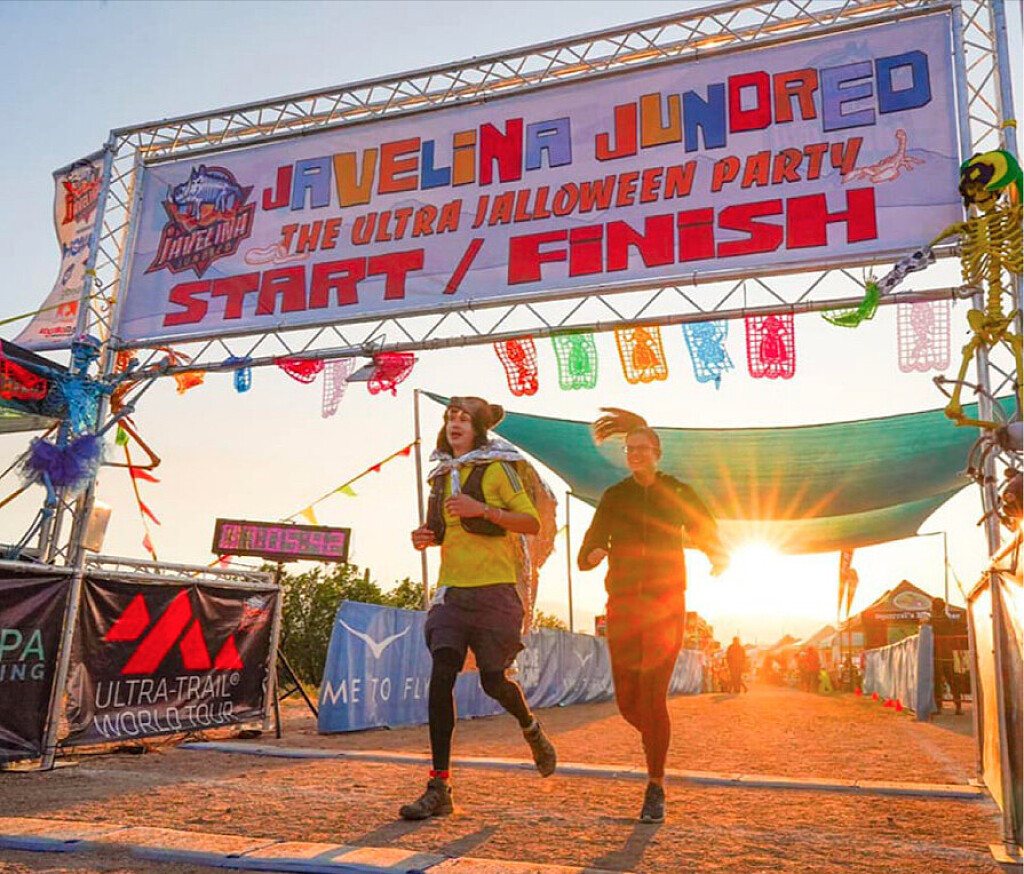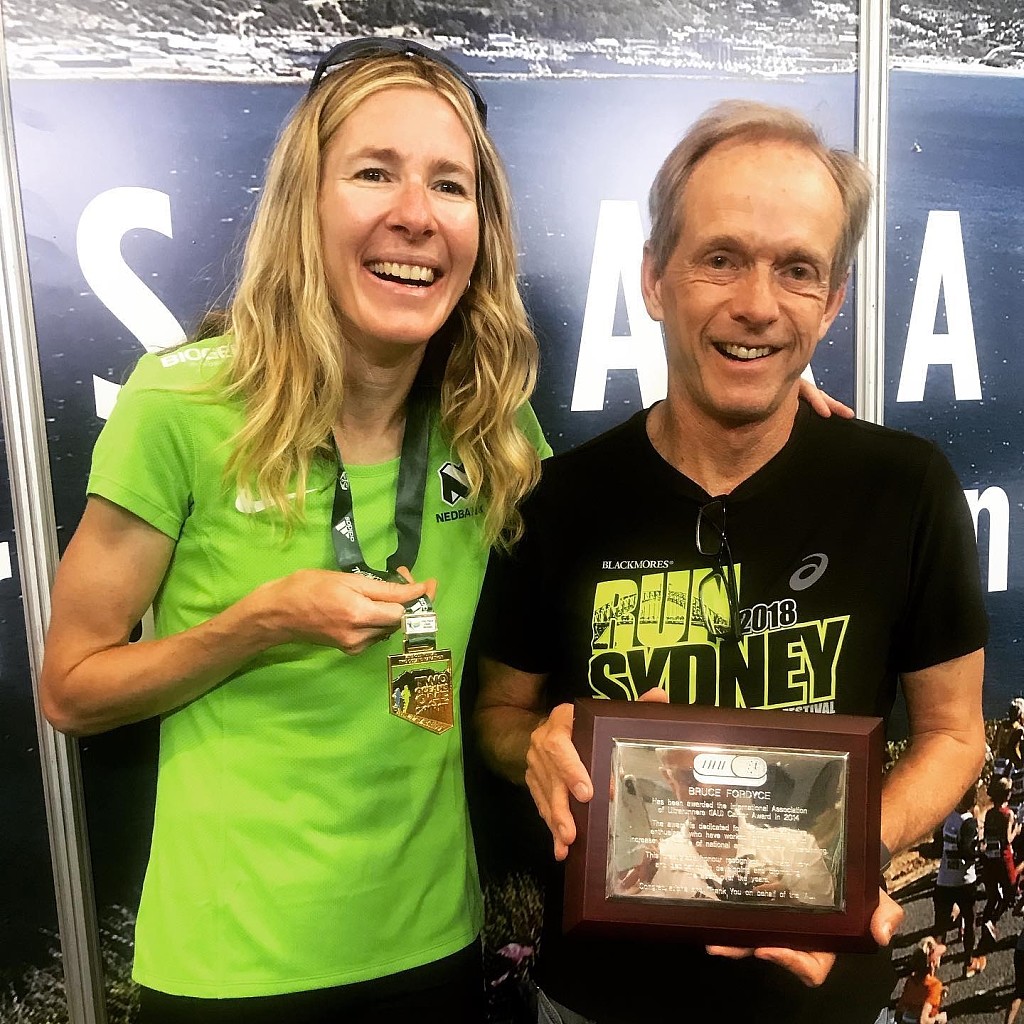Running News Daily
Running News Daily is edited by Bob Anderson. Send your news items to bob@mybestruns.com Advertising opportunities available. Train the Kenyan Way at KATA Kenya and Portugal owned and operated by Bob Anderson. Be sure to catch our movie A Long Run the movie KATA Running Camps and KATA Potato Farms - 31 now open in Kenya! https://kata.ke/
Index to Daily Posts · Sign Up For Updates · Run The World Feed
Articles tagged #Devon Yanko
Today's Running News
Conquer Your Longest Distance Yet With These 9 Tips
Ultrarunners and coaches share their best advice for building mileage without getting injured.
Whether you want to progress from a 5K to a half marathon or a marathon to an ultra, a few general rules on how to run longer can help you get there.
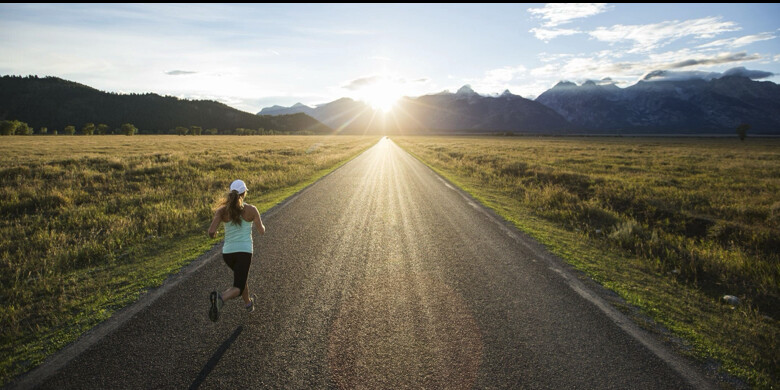
While building mileage and time on your feet is paramount, the key to doing it successfully involves patience and persistence. “As much as volume matters—volume is king—too much volume too soon can get you on the sidelines,” Bertrand Newson, RRCA-certified run coach and founder and team captain of Too Legit Fitness, based in San Jose, California, tells Runner’s World.
Follow these tips from Newson and other coaches and ultramarathoners to successfully increase your mileage, avoid injuries, and crush your longest distances.
1. Build a Base, Then Keep It Consistent
“I steadily built up to running 250-mile races over many years, but I started by running one mile at a time,” says Sarah Ostaszewski, pro ultrarunner with Tailwind Nutrition who won the 2023 Ouray 100-Mile Endurance Run. “Build a strong base and try to keep a consistent running routine, so then adding a little extra here and there won’t seem so daunting.”
Base training typically requires about four to eight weeks (before following a race training schedule) to strengthen your cardiovascular system and your muscles, but the longer you can regularly run and set a foundation, the better. Your base work should involve mostly easy runs, low mileage, and maybe low-key speedwork (depending on your fitness level), like ending a run with strides. This part of your training is all about consistency, rather than actually building mileage.
Ultrarunner Mirna Valerio stays consistent by focusing on time on her feet, rather than distance. “This has been mentally freeing,” the author of A Beautiful Work in Progress tells Runner’s World.
“I have a standing appointment with my treadmill a couple times a week,” says Valerio, who will aim to run a minimum of 12 hours a day over six days at the Lululemon Further event, an ultramarathon for women in March. “I just get it done, which incidentally is one of my mantras.”
2. Find Your Best Approach to Building Volume
If you’re new to running and want to run longer, add another day of a short, easy run to your schedule, suggests Stefanie Flippin, an ultrarunner, Lululemon ambassador, and doctor of podiatric medicine, who has earned a first-place finish at several 100-milers.
Maxed out on available days of the week? Add to your long-run mileage, which is what Leah Yingling, ultrarunner and biochemical engineer who will see how far she can run in 24 hours at Lululemon Further, does first when aiming to build volume. The general rule is to increase your weekly mileage by about 10 percent each week, adding to that long run. For example, if you currently clock 17 miles per week with three four-mile runs during the week and a long run of five miles on the weekend, you would keep your midweek mileage the same, but kick up your long run to about seven miles next weekend.
Yingling, and many other pros, also do two runs a day. While this won’t work for everyone, if you don’t have a significant single block of time, clocking some miles in the morning and again in the evening and resting between can help you clock more mileage. One must-do to make it work: Tame the intensity on at least one of those runs.
Charlie Lawrence, 50-mile world record holder, views his second run of the day as a sort of active recovery. He often goes for double digits in the mornings, then runs for about four miles (at minimum) in the evening, keeping the effort light.
No matter what, testing out strategies to see what works for your schedule is the best way to run longer. “That might be adding a walk a few days a week in addition to your daily runs, or maybe you’re adding back-to-back long runs,” says Yingling. “Whatever you do, find something that is sustainable.”
3. Follow a Progressive Training Plan
A good training plan will slowly build mileage to decrease your risk of getting sidelined, as research shows taking on too many miles too soon is one of the biggest risk factors for overuse injuries.
When choosing your training plan, you have to be realistic about the time you have to build up to the distance you want to conquer—and where you’re at now, says Newson. For example, if you have your sights set on a half or full marathon, think about what you can comfortably run today. Then, following the loose rule of adding 10 percent more miles each week, how long do you need to train? If you currently run five miles without stopping and feel good after, and can comfortably clock 12 miles per week, you can probably conquer a 10-week half marathon plan.
Another important factor to look for when it comes to mileage on a training plan: recovery weeks. Newson explains you’ll typically see this as three weeks of building, then a week in which you back off mileage a little to give your body time to recover and actually make gains from all the work you put into your plan. This will also keep your body strong and help you sidestep aches and pains, he adds.
4. Keep Easy Runs Easy
You’ve heard it before but it’s especially true when trying to run longer: Don’t overdo your low-effort days.
“It’s important for me to always run my easy runs, short or long, at a conversational, aerobic rate of perceived exertion. This means that I can easily chat with a training partner for the duration of my runs without becoming out of breath,” Flippin says, who also clocks her heart rate to make sure she’s in an easy zone.
Don’t worry about what shows on Strava, either. “I think a lot of runners run their easy runs too hard and that is because of ego and they don’t want people to think they are slow,” says Devon Yanko, ultrarunner who’s placed first in several 100-mile races and will aim to conquer her longest distance over six days at the Lululemon Further event. “I delight in the idea that people may look at my Strava and think I am too slow, because on race day that won’t be the case!”
More generally, applying the 80/20 rule to your training overall can also help you record more low-intensity runs, Newson says, as it means 80 percent of your workouts should happen at a low intensity, and 20 percent at a hard effort.
It’s these easy runs that will help keep you running consistently—the key that unlocks higher mileage. “A B+ average of consistent runs, strength work, and recovery measures stacked over weeks, months, and years will always trump sporadic A+ weeks followed by a total drop-off,” Flippin says.
5. Master the Long Run
For most people, the long run will make up the bulk of your weekly mileage, but it doesn’t just help you clock more time on your feet. It also teaches you mental stamina, how to deal with fatigue, and it can help you get comfortable with being uncomfortable. With years of practice, this is what many pros say pulls them through farther distances.
Even though Lawrence can deal with being uncomfortable for long periods of time, he still turns to mind games to mentally check off miles. For example, he often breaks a race down into small, manageable chunks, often focusing on the next fuel stop (typically about every four miles) as a check point. If he’s struggling to get to the next four-mile marker, he may tell himself he’ll feel better in 10 to 15 minutes and checks in again then.
In addition to breaking your long run up into segments, Newson also suggests dedicating each mile to someone else, which takes it outside of yourself and gives you another reason to keep going, and says to focus on the mile you’re in, simply putting one foot in front of the other.
Finally, the long run is the perfect time to practice your fueling and fluid intake, Newson says, considering you need energy to clock longer miles. Aim to take in carbs when going for 90 minutes or longer, and go for about 30 to 60 grams per hour after the first hour.
6. Schedule a Few Harder Workouts
To build endurance, you want to run long, but you can also add intervals and speed work into your schedule.
Lawrence gets on the track for VO2 max-specific workouts at least once a week. VO2 max is the amount of oxygen you can take in while running and is a major marker of fitness—the better this metric, the easier running will feel, which will help you go longer with less effort. Focusing on VO2 max intensities on runs means going for about 90 to 100 percent of your max heart rate or about 5K pace, and it could involve intervals like 400-meter repeats.
You could also focus on lactate threshold training. Your lactate threshold is the point at which your body produces lactate at a rate you can no longer clear, leading to fatigue. To help you prolong that side effect—helping you go faster for longer—practice running at your threshold pace. (Here’s how to calculate your running speed at lactate threshold).
To do this, Ostaszewski prefers longer interval workouts with work periods ranging from six to 10 minutes near aerobic threshold. But tempo runs at your threshold speed are also smart.
7. Supplement Your Runs With Mobility and Strength
Before you jump into high mileage, you need a solid warmup. Lawrence has been doing the same activation drills before runs for a long time. He starts with foam rolling most of the lower body, then does a series of exercises, like:
Leg swings
Down dog to lunge rotation
Ankle mobility moves
Banded work, like glute bridges
This go-to routine wakes him up and gets him in run mode, even when he’s not feeling it.
Cross-training workouts are also key. Valerio mixes strength training, mobility workouts, Pilates, and rowing into her training schedule, which she says helps her avoid overuse injuries. Meanwhile, Flippin points to strength training in particular as crucial to running longer. She suggests starting with one day a week to build consistency, then adding on days from there.
Lawrence focuses specifically on doing core workouts every day (one of his go-to moves: the ab roll out), along with dedicated gym time for lifting, in which he conquers moves like hex bar deadlifts.
8. Make Recovery a Priority
Many pro runners turn to a solid nutrition practice to jumpstart recovery and fuel future performances. “I ensure I’m always getting in carbohydrates and protein within 30 minutes of finishing a key workout or long run,” Yingling says.
Finding time for other recovery practices, like mobility work, foam rolling, even meditating, can also support your training and get you prepped for the next round of mileage, Newson says. Full rest days are also important, especially if you’re feeling any aches and pains.
And you can’t forget about sleep for recovery—striving for at least the recommended seven to nine hours—especially for those looking to push their mileage.
9. Don’t Rely on Motivation Alone
Running your longest distance takes dedication and determination, but don’t expect to feel motivated every day. “People often wait to do things until they are motivated, when instead, they should have been focused on completing their plan or working toward their goal,” says Yanko. “I don’t jump out of bed every morning peppy and excited to run, but I am committed to doing the work and thus, I simply get the work done.”
Yanko also suggests tapping into curiosity to keep you going longer. “That is, instead of being intimidated by a workout or long run, I allow myself the opportunity to be curious about what might happen if I simply begin the session,” she says. “I do not believe that one workout or one long run ‘proves’ anything about my fitness or ability to race, so having curiosity means I can get into a session and allow it to unfold with confidence that if I just continue to show up and do the work, I will build my fitness brick by brick.”
Newson also suggests a running group to keep you accountable and consistent, and to elevate the fun of your workouts.
“On the mental side, I always try to see the big picture and remember that all the miles I’m running are for fun and for my own personal enjoyment,” Ostaszewski adds. “I’m always aiming to enjoy the process and recognize growth in the journey.”
by Runner’s World
Login to leave a comment
30 Hours at Javelina Jundred, the Burning Man of Trail Running
Inside the spectacle of ultrarunning’s most festive top-tier 100-mile race
It’s a hot, sunny Saturday afternoon in the desert northeast of Phoenix, and Lindsay DesRochers is being chased by a dinosaur—as if 85-degree heat, a creaky left knee, and a hot spot on her right big toe aren’t enough to worry about during her first attempt at running 100 miles.
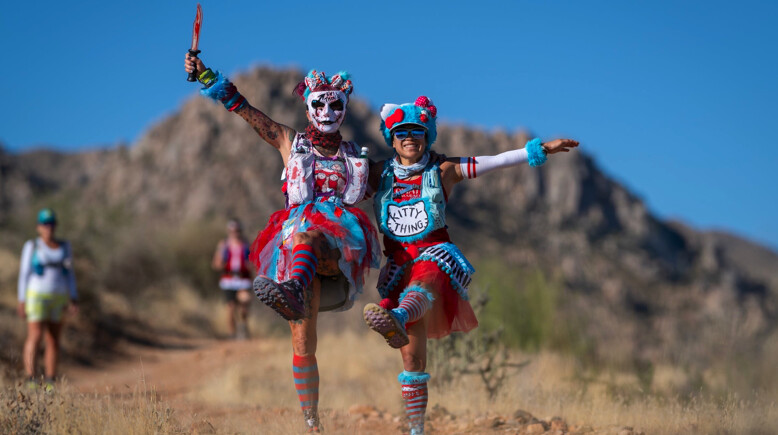
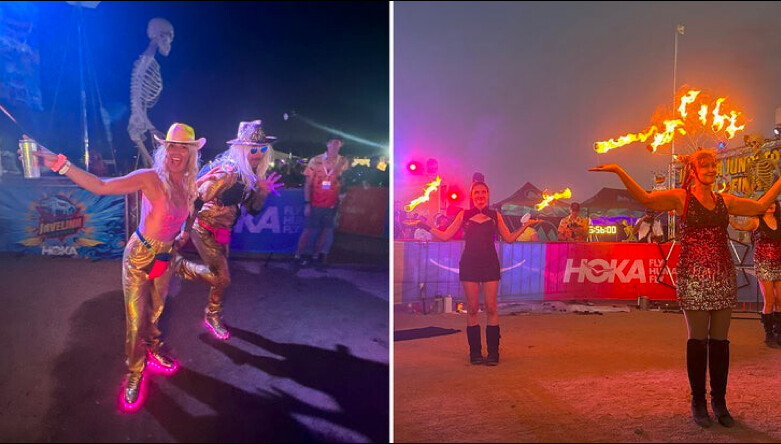
The 44-year-old senior creative recruiter from Scottsdale is 41 miles into the Javelina Jundred, and she also has to contend with a Tyrannosaurus rex who’s making her giggle. The dinosaur is, in fact, local trail running legend, Jerry Bloom, who is sweating and gasping for air inside an inflatable costume that’s kept afloat with a tiny battery-operated fan. He is dressed up as the dino-in-residence and runs alongside DesRochers briefly as she finishes the second loop of the five-lap course before sitting down to refuel and rehydrate in her crew tent.
“The problem with this thing isn’t the heat. It’s just that there’s no oxygen in here. If you run very far, you get oxygen deprivation,” says Bloom, 70, a three-time Western States and Hardrock 100 finisher who’s also run Javelina twice. “For me it’s all in good fun to support Lindsay. I’ve given up trying to be fast a long time ago. But what I’ve learned is that it’s not how far you go and it’s not how fast you go, it’s how you look while you’re doing it.”
Welcome to the Javelina Jundred—the biggest, wildest party in the trail running world.
It’s pretty obvious that the Javelina Jundred is the zaniest event in trail running and, to be frank, nothing even comes close to this dusty desert cavalcade of curiosities. It’s not quite the Burning Man of running, but it might just be better because, first and foremost, it’s a legit ultrarunning event.
More than 850 enthusiastic runners toed the starting line at 6 A.M. to begin the five-lap 100-miler, and about 400 more began the three-lap 100K an hour later. There’s also a single-loop, 19-mile nighttime race called the Jackass Night Trail for about 200 runners that includes a wild DJ’ed party at the Jackass Junction aid station and finishes as the Saturday night revelry is still going strong back at the race compound.
But because Javelina always happens on the weekend before Halloween, there’s a natural party vibe and a non-mandatory-yet-compelling reason for runners, pacers, and support crew to wear costumes. And, let’s face it, Halloween gives everyone license to fly their freak flag, so when you mix that with ultrarunning, just about anything goes. Only here it’s known as Jalloween.
This year’s most popular dress-up themes seem to be tropical and western, but, almost predictably, there are quite a few Barbie and Taylor Swift cosplayers, as well as a few heavy metal rock stars, glow-in-the-dark skeletons, and several very creepy clowns. Dozens more runners race through the desert wearing bunny ears, fox tails, and devil horns.
“This is a safe space for everyone to have fun in their own unique way,” adds Dan Gampon, a Hoka sports marketing representative from Hawaii. “It’s a fun way to give the people a chance to be weird and bring a part of themselves that they might have been wanting to bring out, and give them the opportunity just to have fun anyway they want to.”
Some crew tents are decorated with accouterments to match a particular theme, but most feature colorful holiday twinkle lights, camping chairs, sleeping bags, and coolers full of adult beverages. While there’s a stash of fancy engineered nutrition supplements and electrolyte drinks in every tent, there’s also the widest range of healthy and not-so-healthy snack food you can imagine. (I’m looking at you, guy simultaneously drinking a Red Bull and eating a handful of marshmallow Peeps.)
The Javelina staff and volunteers are fully into the Jalloween theme, too, especially race director Jubilee Paige, who dons several costumes during the 30-hour event—including getups she calls Race Director Barbie, Weird Barbie, The Dude, Cousin Eddie, Chef’s Kiss, and A Macaroni Penguin. She once again ends the event dressed as the Pope—a.k.a., “her Joliness”—because she considers Sunday “Jallelujah Javelina,” a day of celebration.
The Javelina Jundred was founded in 2003 by Phoenix ultrarunner Geri Kilgariff as an irreverent, party-oriented run on a multi-loop course, and gradually gained regional and then national popularity as word spread through the ultrarunning community about how much fun it was. Local ultrarunner Jamil Coury took over as race director in 2008. The next year he started Aravaipa Running, a Phoenix-based company that bought and now owns 75 other running events in Arizona, Colorado, Utah, Nevada, and New Hampshire.
Despite increased popularity and significant growth, Coury, Paige, and the rest of the Aravaipa crew have been able to maintain Javelina’s grassroots experience while growing it to about 1,500 runners in three events with at least that many pacers, crew, and family members hanging around the race compound. In many ways, it represents the best of both where trail running has been, but also where it could be heading.
“The race was born from a fun spirit of running with friends and looping in the desert—shout-out to Geri Kilgariff for her creation of the event in 2003,” Paige says. “But as it’s evolved, we saw opportunities to elevate the race to an ‘event’ experience for runners and crews—an ultra festival—the music and lights and entertainment just enhances that experience. However you experience Javelina, I just want you to have fun!”
As the sun begins to set, several top competitors in the 100-miler are scattered out on the remote sections of the course in hot pursuit of four Golden Ticket entries into next summer’s Western States 100. (Two tickets each for the men’s and women’s races.) That includes Boulder, Colorado, runner Jonathan Rea, who is back after a second-place finish a year ago, and—with newfound confidence from a fourth-place finish at the CCC 100K in Chamonix, France—is tearing up the desert trails on course-record pace. Triathlete-turned-ultrarunner Heather Jackson, who splits time between Bend, Oregon, and Tucson, Arizona, also takes it out hot, hoping to make up for a frustrating fifth-lap fade last year after unbearable quad pain reduced her to a walk and forced her to settle for a fifth-place finish in her 100-mile debut.
Earlier in the day, Denver’s Rajpaul Pannu and San Francisco’s Anna Kacius made quick work of the less-competitive, three-lap 100K race, finishing first and second overall, respectively, and setting new men’s (7:15:53) and women’s (8:13:07) course records in the process, while winning by more than an hour over their nearest competitors.
Ultrarunning GOAT Courtney Dauwalter from Leadville, Colorado, is out there, too, but she’s not racing for the win. She’s running the 100K with her mom, Tracy, a 66-year-old avid trail runner from Edina, Minnesota. They attempted a 50-miler in Minnesota last fall, but were timed out before the finish, so this year they chose the big party race in the desert where Courtney set a course record in 2016 before she became a household name. They’re not in costumes, but they’re running as Team Bucket List and wearing matching white shirts, cactus-themed socks, and olive-green-and-black shorts.
Because runners constantly revolve through the turnaround point at the start/finish area, everyone else is always on the move throughout the race compound. Some are drinking craft beers and mingling as they wait for their runners, while others are watching the race livestream on their phones or from the jumbotron in the Javelina Jeadquarters circus tent. Still others are devouring freshly cooked artisan pizzas made to order in the Freak Brothers Pizza mobile brick wood-fired oven.
Rousing cheers and applause catch everyone’s attention every few moments as an elite runner arrives—including the ever-smiling Jackson, who quickly heads out on her fifth and final lap with a 30-minute lead in the women’s 100-miler.
“Heather is just amazing,” says Troy Brown, 48, a trail runner from Coto de Caza, California. “She’s always smiling. I’m just a fanboy, but I like anyone who can smile that much through pain.”
After Jackson runs out of sight, Brown quickly shifts his focus to getting his feet into an inflatable T-Rex costume so he can participate in the costume contest, an informal event that brings out a sheriff riding an inflatable rooster, Minnie Mouse, a foursome of Teletubbies and, of course, several dinosaurs. There’s also a guy dressed as Aladdin wearing a large golden lamp around his waist who is joined by a scantily clad Jasmine character who not-so-discreetly rubs the lamp in a Not Suitable for Work (NSFW) scene that draws both raucous laughs and shocked gasps from the crowd.
One of the best dressed-up groups of the event is a foursome of women from California’s Healdsburg Running Company: Dominique Chevalier (“Western Barbie”), Krista Kappus (“Alien Barbie”), Saddie Alloway (“Rootin’ Tootin’ Diva Barbie”), and Susan Oh (“Disco Bob Ross”). But the costume contest winners are the Montana Mermaids, a bikini-and-grass-skirt trio from Bozeman—Lena Romeo, Kara Haskell, and Liv Bleskin—who were there to crew and support elite runners Rachael Norfleet of Montana in the 100K and Utah’s Ryan Montgomery in the 100-miler.
The sun begins to set, but the party’s just getting started as DJ Colter Stillwell pumps tracks through the sound system as a full moon rises in the eastern sky. One of the rowdiest dancers is Brendan O’Hara, a Colorado trail runner who’s dressed up in a red-and-white mouse outfit with flashing lights similar to what popular Canadian electronic musician Deadmau5 wears on stage. As lots of energized runners entered in the Jackass race are about to head out into the night, two professional fire dancers perform a mesmerizing routine adjacent to the start line.
Just after dark, Rea comes flying into the finish area, stopping just short of the finish line to pantomime deadlifting a colossal barbell before crossing the line in a new course record of 12:43:10. Seattle runner Blake Slattengren stopped the clock next in 12:58:07 to claim the second Golden Ticket, while Montgomery ran another strong race to take the final podium spot in 13:01:14.
Redeeming herself from last year, Jackson finishes strong to win the women’s race and finish sixth overall, thanks in part to the aggressive pacing of Devon Yanko. Jackson’s time of 14:24:47 is the second-fastest women’s time ever behind Camille Herron’s 14:03:23 course record from 2021. Spain’s Ragna Debats (14:55:27) outran Riley Brady (15:29:17) to earn the second women’s Golden Ticket.
Not long after midnight, the Dauwalters finish, too. Covered in dust, sweat, and even a little bit of blood—Tracy took a tumble on the first lap early the previous morning—they cross the finish line after 17 hours of running with big smiles and hug in a classic mother-daughter moment. Late Sunday morning, DesRochers makes it to the finish line, too, in 27:31:41, battling hard to overcome dehydration, an upset stomach, and nagging hip flexor pain at various points during the race.
“I was prepared for it to be hard, and I knew I was going to hurt. At some point, I was like, Oh, right, this is what running 100 miles feels like,” DesRochers says. “It was difficult, but I kept my positive mental attitude the whole way. I have a buddy who has a saying, ‘Forward is a pace,’ so I kept repeating that and kept putting one foot in front of the other and I didn’t quit.”
Something that’s especially apparent at Javelina is that everyone is celebrated as an equal, regardless of finishing times, trail running experience, athletic ability, age, or any other dissimilar details. The event goes out of its way to create an environment that promotes visibility and inclusion for everyone, and the community of participants seems to embrace it by cheering and encouraging for everyone the same.
It has partnered with Native Women Running, Latinos Run, and Black Men Run each of the past several years to bring their runners to the race, and it was also one of the first ultra events to offer a non-binary category. This year there were six non-binary runners racing over its three races, led by Willow Dolde in the 100-miler (20:01:29), Andreas Anderson in the 100K (13:54:30), and Tasha Hartwig in the Jackass 31K (6:42:07). (Although Brady, a non-binary runner from Boulder, was competing in the women’s division because they were racing for a Golden Ticket, they were also, unofficially, the top non-binary runner in the race.)
As the golden hour comes and goes early Sunday afternoon—and final finishers Holly Sitzmann, Jim Buckley, Brittany Edmiston, and Leslie Astle squeeze under the 30-hour cutoff with help from their pacers and crew—it’s clear that everyone at Javelina is celebrated equally and enthusiastically. That also includes two unofficial finishers—Rayna Rodriguez and Tatiana Orozco—who complete the 100-mile course just outside of the time cutoff, but are welcomed by a scream tunnel of remaining spectators and the adulation of Paige even though neither will receive a finisher’s buckle.
“Javelina is a celebration, and the invitation to run and participate at Javelina extends to everyone,” Paige says. “I want to ultimately show how amazing the community is and that this sport is for everybody and every body—the spirit of ultra is diverse and should be celebrated.”
by Outside online
Login to leave a comment
Lululemon launching six-day ultramarathon for women in 2024
Lululemon will launch a six-day ultramarathon next year–a step into new territory for the athleticwear brand that it says is aimed at promoting and better understanding the potential of women in endurance sports.
The company says the Further six-day ultra will kick off on March 8—International Women’s Day—on a certified looped course at a location to be announced. Ten athletes are slated to compete in the event: Camille Herron, Devon Yanko, Kayla Jeter, Leah Yingling, Mirna Valerio, Montana Farrah-Seaton, Stefanie Flippin, Vriko Kwok, Xiaomeng Jia and Yoon Young Kang.

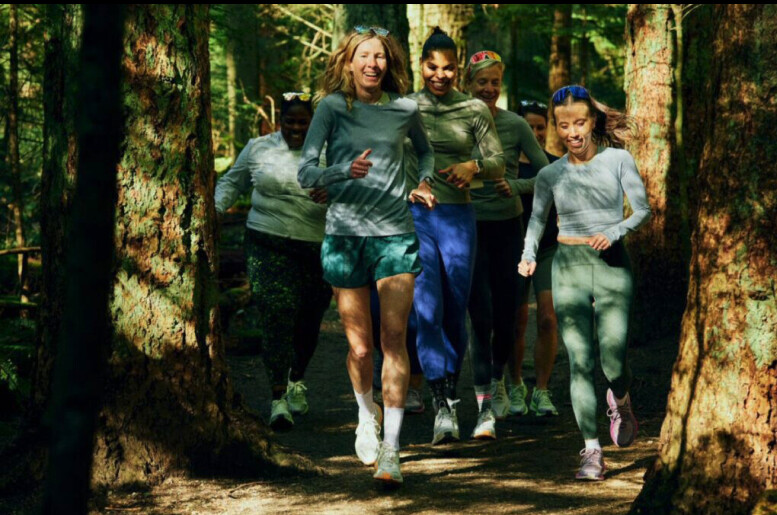
“Women are continuing to redefine what’s possible,” says Herron, the American ultrarunner who set the 48-hour women’s world record in Canberra, Australia in March by running 435.336km. “It’s important we have the platform and opportunities to showcase what we’re capable of. Further represents this to me. I’m honoured to join this phenomenal group of athletes, elevate women’s running and celebrate our human potential.”
The multi-day event will give the runners the chance to run the furthest distance of their careers with the opportunity to set world records, says the company.
Lululemon says it will be partnering with Canadian Sport Institute Pacific to conduct research studies on athletes during training and the ultramarathon itself to better understand female endurance performance and human endurance performance in general. Each athlete will have access to sport science and medicine support to inform personalized training programs spanning physical, mental and emotional support. Findings from the research are expected to be published at the beginning of March.
“Women are continuously setting new ultramarathon records, with the difference between male and female performance appearing to get smaller the further humans run,” says Trent Stellingwerf, senior adviser of innovation and research at Canadian Sport Institute Pacific. “However, there is limited research in this space, which creates a biased understanding of human endurance as women are heavily under-represented in sports science.”
Lululemon cites an an audit of select sports science and sports medicine journals that found only four to 13 per cent of published studies were female-only. The new research is intended to address the “limited knowledge around female athletes while bringing awareness to the need for additional research,” says the company.
“Women are historically underserved when it comes to opportunities to compete, research devoted to the pursuit of their goals, and product innovations built with them in mind, yet they continue to push the boundaries of human possibility in sport regardless of the inequities they face,” says Nikki Neuburger, Lululemon’s chief brand officer. “Further is grounded in our purpose at lululemon to unlock greater possibility and well being for all, and we see it as an opportunity to better serve women, solving for their specific unmet needs. With Further, we aim to inspire belief in what is possible for women when they’re supported with resources typically reserved for men.
Canadian multi-day ultramarathoning pioneer Trishul Cherns tells Canadian Running that while organizing a multi-day race may seem to some as unusual territory for Lululemon, he sees many positives in the Further project.
“From my perspective, it puts the spotlight on something close to my heart, multi-day running. The goal of the Global Organization of Multi-Day Ultramarathoners (GOMU) is to make multi-day running mainstream,” says Cherns, who adds the Further project “puts a spotlight on women in multi-day running. Ultramarathons are not just 100 mile trail runs; they are diverse–10-day, 1,000-mile, 3,100-mile races on tracks on roads—just like the group of women that make up this project.”
He applauds Lululemon’s effort to invest more resources and attention to women’s sports. “Their focus is on data capture to further sports science and research on women’s endurance. Brava!” says Cherns. “It’s very true that women are sorely under-represented in the research data and the science of female performance is marginalized or non-existent … Only recently has the discussion of women’s menstrual cycles on sports performance even been openly talked about by women athletes, let alone the subject of serious study.”
Along with its announcement of the Further multi-day ultramarathon, Lululemon unveiled the Blissfeel Trail, the company’s first road-to-trail running shoe. The company says the insights it gains from the Further project will help the company expand on products designed to support women as they go further on their runs.
by Running Magazine
Login to leave a comment
Competition Is Stacked at This Year's Lake Sonoma 50
The Lake Sonoma 50 is one of the fastest and most competitive 50-milers in the U.S., and it's turning up the notch on competition in its 16th year.
Set in the rolling foothills near Healdsburg, California, the hilly course is known for its smooth singletrack and more than a dozen creek crossings. For the first time, Lake Sonoma will be the 50-mile selection race for Team USA, and all runners who race their way onto the podium will get an automatic invitation to run for Team USA in the long-format race in this year's World Mountain and Trail Running Championships set for June 6-10 in Innsbruck-Stubai, Austria.
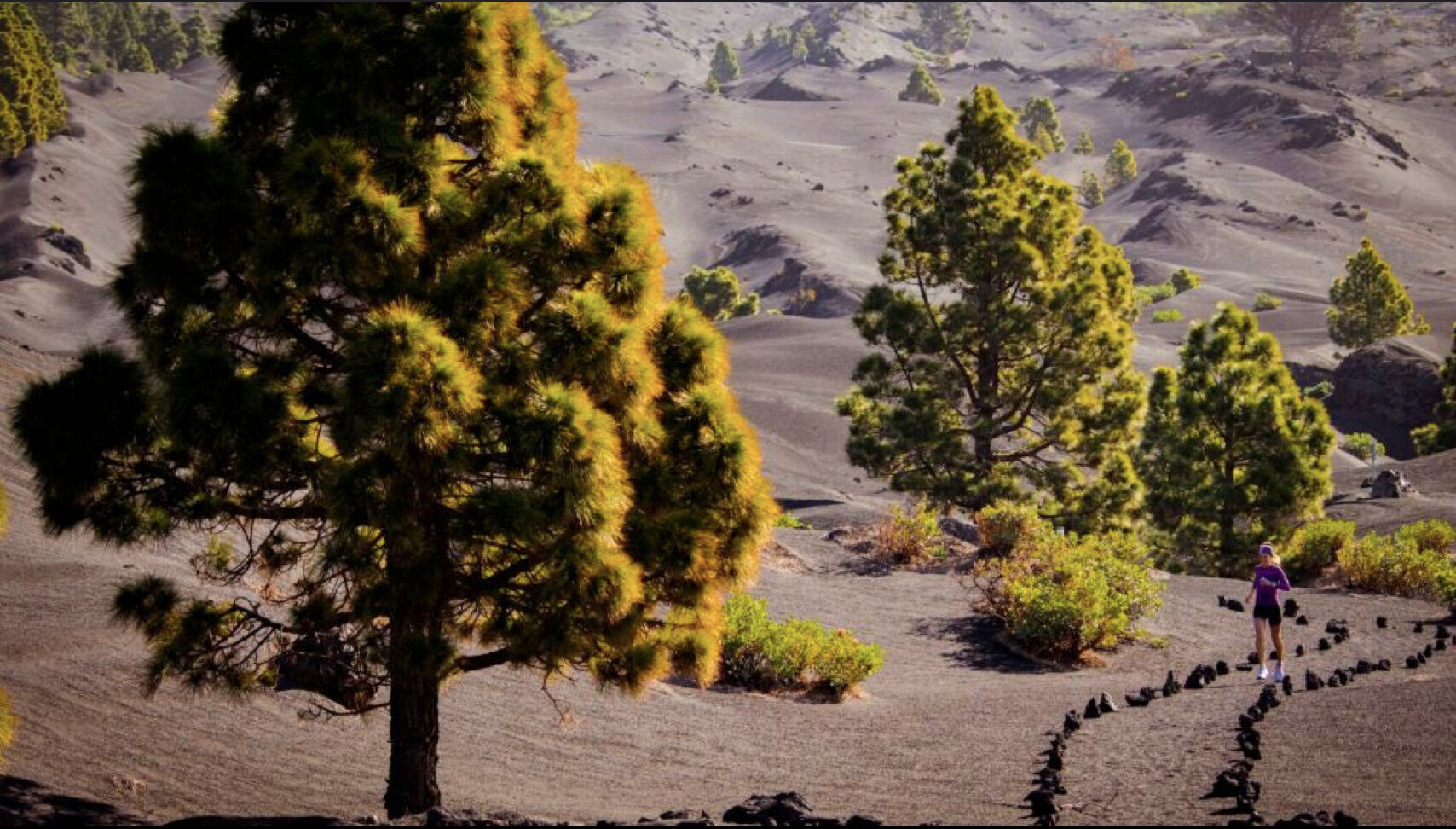
While Lake Sonoma has always been a competitive event (previously a Golden Ticket Race), that invitation has certainly encouraged a high level of competition.
"I'm super psyched for Lake Sonoma to be a USA Selection Race," says Gina Lucrezi, race director and founder of Trail Sisters, a non-profit that supports women in the trail space. "This event has been a top 50-mile race in the U.S. since its inception. John Medinger, Lisa Henson, and Skip and Holly Brand have created a sought-after course and event, and I'm proud to continue their legacy of keeping it a barn burner event, pulling in top talent to test their fitness and abilities." Lucrezi represented the U.S. at several USATF MUT Championship events, and she's excited that her event will extend that opportunity to a new generation of ultra athletes. "It's both an honor and privilege to host this opportunity for runners vying to represent the USA," says Lucrezi.
The event is Trail Sisters certified, which means there will be equal podium spots, awards, women's specific race swag, menstrual products at aid stations, and equal space for women on the start line. Lake Sonoma races are held within the Native lands of the Southern Pomo. The Southern Pomo are part of the Federated Indians of Graton Rancheria, a federally recognized tribe. The race has also partnered with a local charity, The Children of Vineyard Workers Scholarship, which provides education funding to the kids of agricultural workers in the area.
"In terms of diversity, equity, and inclusion, when hosting the lottery, we split the field 50/50 male/female. (Non-binary folks were grouped in the field that they noted as their gender assigned at birth). We then utilized gender-specific waitlists if participants cancel or defer, but we extinguished our waitlists and then allowed for open registration to fill our vacant spots. In the lottery form, we requested race and ethnicity information," Luzrezi told Trail Runner in an interview. "This provided insight into the diversity of signups and helped us make sure the starting line could be as diverse as possible."
Sweet Sixteen
In its 16th year, Lake Sonoma has ushered a generation of ultrarunners onto the scene, and many are returning to reconnect with those fond memories at an event that epitomizes the grassroots appeal of trail races, with an internationally competitive field.
Ultrarunner Devon Yanko is competing in the marathon after her win and earning a Hoka Golden Ticket at Javelina Jundred, says she feels a deep connection to the race after winning it early on in 2010. Building up to Western States in June, Yanko says her primary objective is to feel healthy and enjoy the race.
"I have been a part of Lake Sonoma almost since its inception and have been a spectator/crew for most of its biggest years," says Yanko, who formerly lived in San Anselmo, California. "It was an extension of my local community and always had the best vibes. I'm mostly looking forward to seeing friends, supporting the race, and helping keep the tradition of Lake Sonoma alive."
Many runners have long histories with the buttery, grass-lined trails. Lake Sonoma was one of the first ultras OCR athlete and ultrarunner Amelia Boone ever knew about more than a decade ago. But, a broken femur derailed her initial attempts at the 50-mile event, and she's been looking for an opportunity to get back to Lake Sonoma's start line ever since. She says the high level of competition and community vibe were big draws as well.
"I'm looking to run strong in a competitive field. It's been a while since I've run a race with a super deep field, so I'm looking to put the ego aside and have some faith in myself. My ultimate reach goal would clearly be top 3 to qualify for the U.S. World team, but that'd just be a bonus," says Boone. "Oh, and give as many high fives on the trails as possible."
Brett Hornig, a coach and athlete from Ashland, Oregon, hopes that the third time's the charm. He's run the race twice, and hasn't had the day he wanted.
"LS50 was one of the premier 50-mile races in the world when I was first introduced to trail and ultrarunning around 2014, so the allure of competing against the best has always been there for me," says Hornig. "That initially drew me to the race, and the competition is still there, but it is the community who puts on the race that keeps me coming back. The race directors (both past and current), the volunteers, sponsors, and fans of the sport put on an incredible event that everyone should check out for themselves at least once."
Ryan Miller, the winner of the 2022 Gorge Waterfalls 50k and Bandera 100k, from Vero Beach, Florida, says he's excited by the fast and smooth Sonoma trails.
"The primary allure of Lake Sonoma 50 has to be the trails themselves. Have you seen the videos and pictures of this place?! It's absolutely stunning. I'm most looking forward to the competitive racing with big stakes as it tends to bring the best out of everyone," says Miller.
The proximity to wine country doesn't hurt either.
"Throw in a deep competitive field, prize money, my wife's excitement to go to California wine country, and an opportunity to earn a spot on the World Championship team, and it's a no-brainer for an athlete like me focusing on the 50K-100K distances."
Miller, like others, is gunning for a podium finish that would earn an invitation to race for Team USA at the World championship.
The race field is chock full of talented runners, including the women's field with Abby Levene, Anne-Marie Madden, Allison Baca, Tara Fraga, Sarah Keys, Megan Drake, Sarah Biehl, Erin Clark, Natalie Sandoval, Erin Viehl, Amelia Boone, Anna Kakis, Catrin Jones, Mercedes Siegle-Gaither, Sarah Cummings, Kristina Randrup, Jackie Merrit and Hannah Osowski.
The men's race includes Miller, Hornig, Drew Holmen, Seth Ruhling, David Kilgore, Drew Macomber, Preston Cates, Terence Copeland, Reed Breuer, Aubrey Myjer, Charlie Ware, Ryan Sullivan, Caleb Olsen, Chris Myers, Jason Schlarb, Erik Sorenson, Matthew Seidel, Morgan Elliot, Addison Smith, and Travis Lavin.
"The overall Lake Sonoma race event is focused and centered on community," says Lucrezi. "I'm really excited about our new start and finish location and the celebration vibe we are creating. No matter your pace, experience, or what place you finish, Lake Sonoma is an event that welcomes all runners and fosters friendships made through the event and on the trails."
Login to leave a comment
Lake Sonoma 50
The race is held on the rugged trails at Lake Sonoma, about 10 miles northwest of Healdsburg. The course is 86% single track and 9% dirt roads, with the first 2.4 miles on a paved country road.The race starts at 6:30 a.m. and has a 14-hour time limit. ...
more...New and familiar faces vie for JFK 50-Mile Titles This Weekend
This weekend's JFK 50-Mile in Hagerstown, Maryland, will see Thanksgiving-like temperatures between the 20s and 40s, in keeping with many past editions of the race. But that's where the similarities between the 2021 JFK and previous races end.
Over 1,000 athletes will descend upon Hagerstown on Saturday with every possibility that a new champion will be crowned in both the men's and women's races.
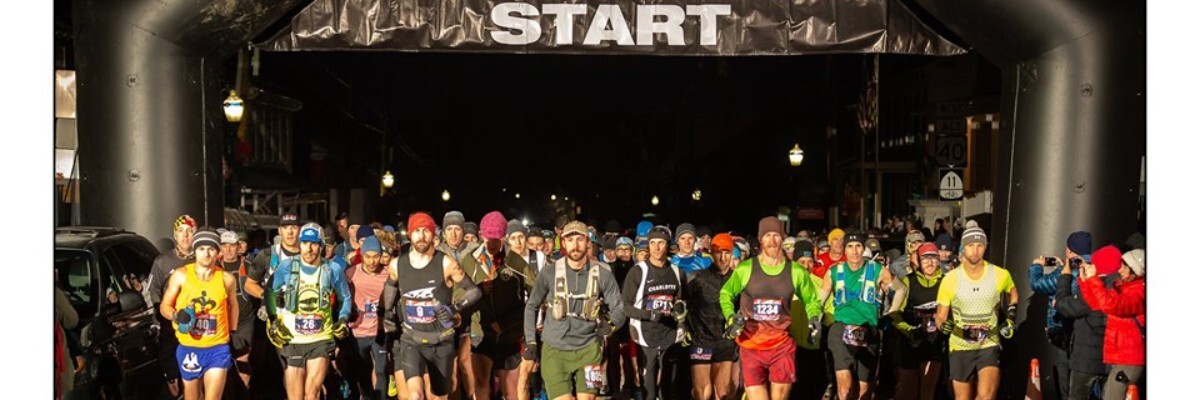
On the men's side, the most recent champion to return to JFK is David Riddle, who won in 2011. It might be 10 years since his victory, but he's fresh off a win at the Super Bull Trail Championships 50K in Wooster, Ohio and has won Alabama's Mountain Mist 50K a whopping nine times, most recently this January.
JFK has a brand-new course record set last year by Hayden Hawks (a blistering 5:18:40), and a stacked field of lesser-known names will see how close they can come. Ultra newcomer Adam Peterman, who was second at this year's Pike's Peak Marathon and won the Speedgoat 50K in July, will look to make his mark on the men's field. The top returner is Anthony Kunkel, who was fourth last year. Other names to watch include Ben Quatromoni, who won the Kilkenny Ridge 50-miler in September and the Algonquin 50K in February; Jared Bassett, who won the Rogue Gorge 50K in October; and Sean Van Horn, fresh off a second-place finish at the Grand Traverse 40-miler and third at the 2020 Javelina Jundred 100-mile.
But it's on the women's side where things get really interesting. Like the men, the women have only one of the past two decades' champions returning in the form of Devon Yanko, who claimed the crown in 2009. Yanko is also one of nine women in the field to have raced in the U.S. Olympic Marathon Trials back in February 2020. Others from that road marathon include Sarah Cummings, Anna Kacius, Sarah Biehl, Starla Garcia, Jeanne Mack, Rachel Viger, Karen Dunn and Caitlyn Tateishi.
nna Mae Flynn will make her JFK debut this year. The 2019 champ at both the Speedgoat 50K and the Lake Sonoma 50-Mile will be one of a slew of athletes chasing Ellie Greenwood's course record from 2012 of 6:12:00. Also watch for Kimber Mattox and Kristina Randrup. Mattox won the 15-mile Smith Rock Ascent in Oregon in May (where she was 5th outright) as well as the 2020 Way Too Cool 50K. Randrup won the American River 50 Mile in California in May by nearly an hour, and was third at the Lake Sonoma 50 Mile in September.
And the stories at JFK won't end with those vying for the win. Watch for Carolyn Showalter, who will be looking to extend her record of 34 JFK finishes. The 67-year-old also holds two other JFK records: she's tied for most wins by a woman with six AND most consecutive finishes with 22, a streak she held from 1982-2003.
No matter what, one thing is for sure: this year's JFK will be one of a kind.
Login to leave a comment
Camille Herron breaks course record at Javelina Jundred 100-miler
The 19th annual Javelina Jundred took place this weekend in Arizona’s McDowell Mountain Regional Park, and Camille Herron won the women’s race and placed fourth overall, setting a new course record in the process of 14:03:23. Arlen Glick of Ohio won the men’s race in 13:14:51, his ninth win at the 100-mile distance since his first one in 2018.
The 100-mile course is made up of five loops run on the Shallmo, Pemberton and Cinch trails and features rolling single track through the Sonoran Desert. There is also a 100 km event in which runners complete three loops, as well as a single loop race, called the Jackass 31K. Each loop climbs slowly from the start to the finish, for a total elevation gain of about 1,580 feet (457m) for each loop.
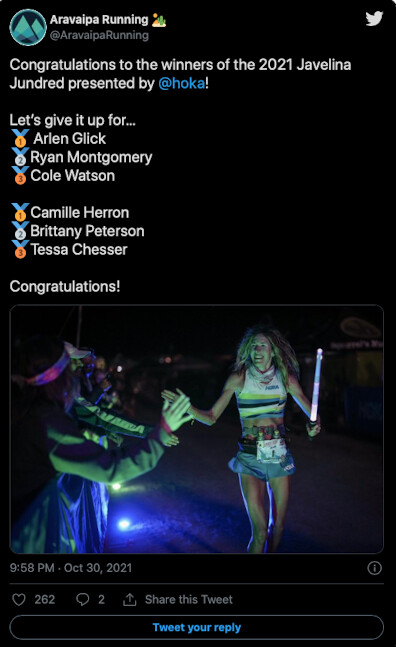
Herron set a strong pace right from the start line and didn’t let up for the entire race, creating a nearly 10-minute lead by the 22-mile mark. She crossed the finish line fourth overall, more than 90 minutes ahead of the next-best woman, in 14:03:23. This time smashes the previous course record of 14:52:14, set by Devon Yanko in 2015. Idaho’s Brittany Peterson, who was the fourth woman at Western States in June, managed to stay within 30 minutes of Herron for more than half of the race, but was not able to keep up that pace all the way to the finish, taking second place and eighth overall in 15:47:23. Tessa Chesser of Arizona rounded out the women’s podium in 10th overall in 16:25:05.
by Running Magazine
Login to leave a comment
Javelina Jundred is the Ultimate 'Jalloween' Party
There's going to be one hell of a Halloween party held on the outskirts of the Phoenix metro area this weekend.
Part authentic endurance running race and part freak show with costumed trail runners constantly in need of rehydrating, the Javelina Jundred trail running races and post-race party are the stuff of legend. As the race producers at Aravaipa Running proclaim from the start, "it will test your endurance and challenge your sanity."
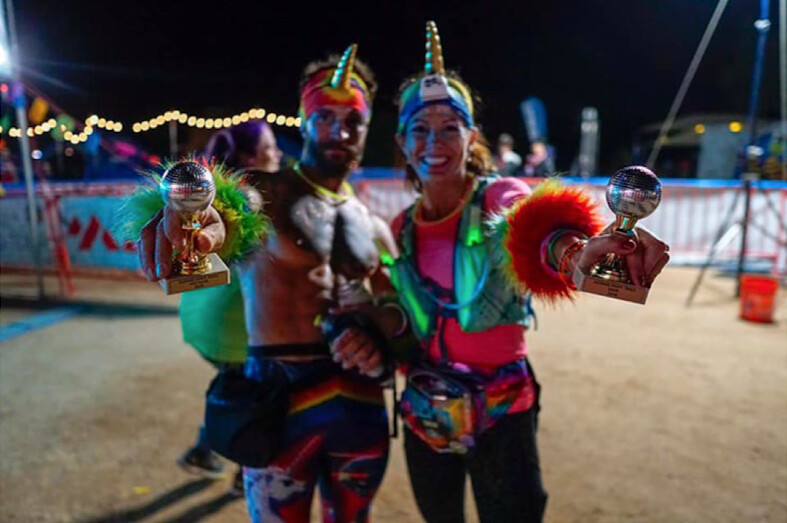
The 19th annual Javelina 100-mile and 100km races begin Saturday at 6 a.m. and send runners out on a mostly flat and fast multiple- loop course through the desert terrain of McDowell Mountain Regional Park. And while fast running isn't discouraged - the women's 100-mile winner usually finishers under 16 hours and the men under 14 hours - costumers definitely are encouraged. There's also a nighttime race called the single-loop Jackass Night Trail 31km that finishes as the Saturday night party is starting to rev into high gear.
Javelina is a trail running party that really wants to be an all-night rave. As much as it offers great fall racing opportunities (with 2022 Western States 100 Golden Ticket qualifying spots for the first time), it's really more about being a massive Ultra Jalloween Party for the ultrarunning community. The races draw both elite pros, middle-of-the-packers and novice runners alike, but it's the colorful costumes, free candy at aid stations, all-night music, spontaneous dance parties, fire dancing, misfit parade for waitlisted runners and other festive craziness that runners remember the most.
The race was started in 2003 by Phoenix ultrarunner Geri Kilgariff as an irreverent, party-oriented fun run on a multi-loop course and eventually later taken over by Aravaipa Running in 2008.
"She created this event to basically troll everyone, and thought that it would be funny," Matt Feldhake said during the race's video preview released this week. "And it's turned out to be this incredible, fun event in the desert. She created something great and we've been grateful to continue to put it on since 2008."
How wild is it? Put it this way, no other race has an aid station with the nickname of Boner. (It's a skeleton figure you'll encounter at the Jackass Junction aid station.) There's also a "Best Ass Award" at this desert party, which coincides with the adult-themed "R" rating Aravaipa brandishes on its website.
As for the racing, there are plenty of talented runners among the 588 entrants in the 100-mile field. That includes Devon Yanko (39, San Anselmo, California), Camille Heron (39, Oro Valley, Arizona), Brittany Peterson (35, Pocatello, Idaho), Meredith Edwards (37, Durango, Colorado), Lisa Robert (42, Tucson), Tessa Chesser (34, Flagstaff, Arizona) and Lotti Zeiler (25, Austin, Texas) on the women's side and Dave Stevens (39, Canada), Adam Dalton (27, San Diego), Michael Demarco (34, Baton Rogue, Louisiana), Zach Merrin (36, North Canton, Ohio), Charlie Ware (36, Tucson) and Joe "String Bean" McConaughey (30, Seattle) among the top men.
Also in the field are 13-time finisher Susan Donnelly (58, Oak Ridge, Tennessee) and 11-time finisher Fred Roberts (61, Tucson). And then there's Ed Ettinghausen (59, Murietta, California), a six-time Javelina finisher who has made a name for himself by taking on the Javelina Jundred in a full suit and heavy jester hat.
In the 100K, Tyler Andrews (41, Concord, Massachusetts) leads a strong men's field, while Cat Bradley (29, Boulder, Colorado) is one of the top entrants among the women's field.
"It's definitely a one-of-a-kind race," says Phoenix trail runner John Byrne. "But even if you don't run fast or well or very long, it's an amazing party."
by Trail Runner Magazine
Login to leave a comment
For Just the Second Time Ever, a Runner Completes a Quad Quad Dipsea
That’s 16 (!) times across the famous Dipsea trail—roughly 113 miles and nearly 38,000 feet of elevation gain.
The Dipsea trail in Marin County, California, is famous for its roughly 2,300-foot incline, rising straight up and then straight down over 7.1 miles from Mill Valley to Stinson Beach. Three races run across the trail every year—the Dipsea, the Double Dipsea (an out and back), and the Quad Dipsea (two out and backs, totaling 28.4 miles).
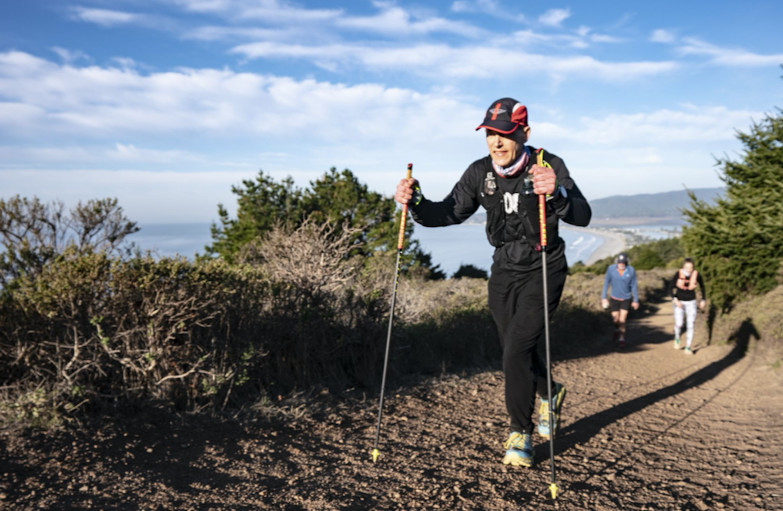
Yet, on record, only one person has ever completed the fabled Quad Quad Dipsea, which is 16 crossings of the trail (eight out and backs) for 113 miles and nearly 38,000 feet of elevation—8,000 feet more than the height of Mount Everest. That person was Don Lundell in 2003. Few have attempted the unofficial race since—until December, when Bradley Fenner became the second runner ever to complete the 16 crossings.
It was an idea sparked by Tony Marshall, a runner from the area. In the absence of races because of the pandemic, Marshall convinced Fenner, his friend and fellow area runner, to take on the challenge on the weekend that Quad Dipsea normally takes place.
Fenner, 56, knew the course well; he’s completed the Quad race 11 times since 2008 and runs on the trail frequently, since he lives nearby. But initially, he wasn’t keen on the idea, feeling nervous about the distance and elevation. Still, he began training and after a solid performance doing a Double Quad (eight out and backs) in mid-October, he decided to get on board.
“Over the years, when I would train with my friends for the Quad Dipsea, we jokingly made reference about doing the Quad Quad, but it never gained a lot of traction,” Fenner told Runner’s World. “I was incredibly and candidly intimidated by the statistics of it. I had never run quite that far. I’d done 100 milers. This was a bit further and involved 36,000 feet of elevation. I was intrigued by it. I was also intimidated by it.”

At 5 a.m. on December 4, Fenner and Marshall ascended the 670 stairs from Mill Valley for the first time, beginning what would be a long adventure lasting more than 30 hours. The duo had a two-person crew, Zak Sterling and Jim Lynch, stationed in Mill Valley and a lone parked car near the trail head in Stinson Beach with supplies if needed.
After about 43 miles, or five out-and-backs, Marshall called it a day because of a stomach issue, leaving Fenner to go the rest of the way on his own. To stay mentally strong, Fenner broke down the race into sections to be completed—eight out and backs was more digestible than 113 miles.
Luckily, he also lined up runners from the community like Charlie Ehm, Gary Wang, Olivia Amber, Jon de St. Paer, Corrine Malcolm, Ezra Becker, Devon Yanko, Louis Secreto, Hal Rosenberg, Greg Nacco, and Geoff Vaughan to crew and pace him over those tough stretches.
One of his biggest challenges was the lack of daylight hours of the winter. He started in the dark and only had, at most, 10 hours of light before night set in on the first day. It would be a long 14 hours at night, using his own lighting gear and his Hoka Evo Mafate 2s to tackle the difficult terrain.
“The downhills in the darkness were hard,” Fenner said. “The moon wasn’t close to full, so there wasn’t light from that. It was treacherous in the pitch black.”
Fenner simply kept to his routine. He did not sit down at any point for fear of the chair absorbing him. He hiked the uphills and jogged the downhills. He stuck to solid foods like egg sandwiches, turkey sandwiches, Coke, Ensure, cheese pizza, and cheese quesadillas, rather than things like gels or sports drinks he thought he’d get tired of over 30 hours.
After 31 hours, he had reached the final out and back of the trail. His quads and calves burned after over 30,000 feet of elevation, but he climbed the stairs one last time. Over the peak he went and back down leaving one more crossing to go.
“I was nervous and not taking anything for granted,” Fenner said. “There are portions of the trail that are so gosh-darn technical. You can role your ankle at any point. I just focused on where I was until the final mile where I finally thought I was going to finish. But I was kind of nervous that disaster could strike pretty much any time.”
As Fenner descended the stairs, he was greeted by the small crowd of his crew and friends who showered him with cheers and champagne. Fenner wasn’t a big fan of the latter after 113 miles, but he said he “was too tired to object and just let them pour it on me because I wasn’t sure if I could do anything.”
He quickly found a chair, finally sitting after 34 hours, 15 minute, and 35 seconds. A friend handed him a Fort Point Villager IPA and someone else brought him In-N-Out Burger. He called Quad Dipsea creator Tropical John Medinger, who congratulated him over FaceTime. 

Afterwards, he felt sore but not horribly so. He did feel a surprising amount of fatigue in for 10 to 14 days after, which he credits to the long, overnight effort throwing off his internal clock. A month out, he is back to full strength and he is proud of his accomplishment.
“I would ask that, whatever you write, please don’t use the word legend,” Fenner said. “I’m better than middle of the pack, but I’m not elite. I set a goal, I worked toward it, and I had a good day with phenomenal support. I’m not a legend. I’m not Rob Krar. I’m just a normal guy who loves the sport. I will say it was the most significant run that I have ever done, so I will at least say that.”
by Runner’s World
Login to leave a comment
America’s Camille Herron has a real shot at winning the Comrades marathon for the second time
The 94th running of the world-famous Comrades Marathon is scheduled to begin at 5:30am (8:30pm Pacific time Saturday) on Sunday, taking place from Durban to Pietermaritzburg.
“The Comrades Marathon attracts the very best ultra-runners in the world and this year will be no different. This year’s up-run already promises to be an epic race,” said Cheryl Winn, CMA chairperson.
In the women’s race, America’s Camilla Herron has a real shot of winning for the second time but her competition is top notch.
Here are the top five female contenders:
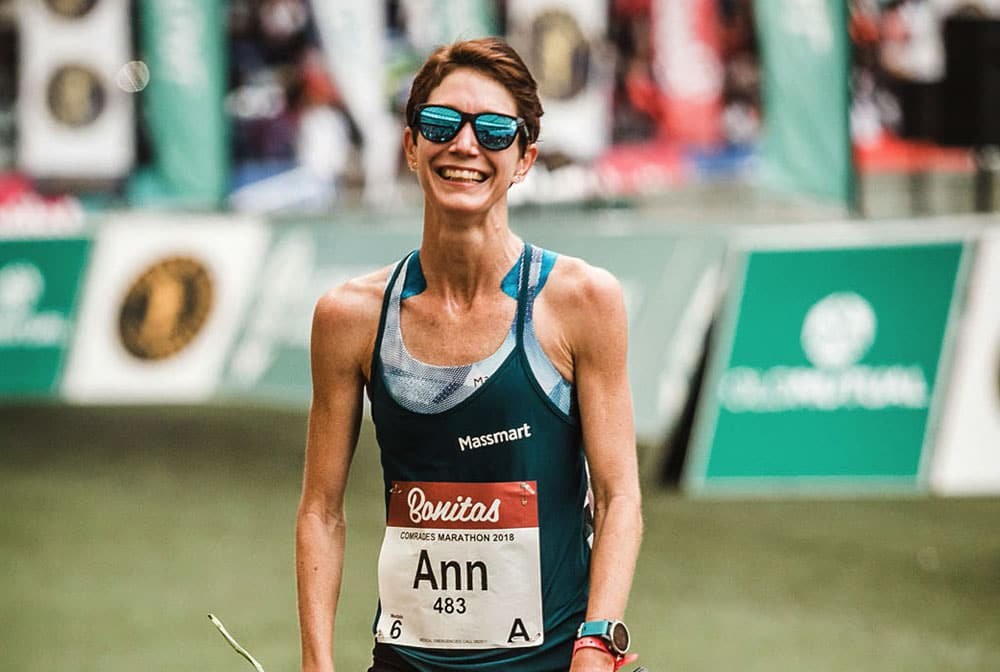
1. Ann Ashworth (second photo) shocked the field to win the 2018 race with a tactical and composed performance. She subsequently left her career as an advocate to run full time ahead of the 2019 race. Ashworth is in good form and achieved a marathon PB of 2:35 at the Valencia Marathon in December. A genuine contender to become the first female to win back-to-back races since Elena Nurgalieva.
2. Gerda Steyn The 28-year-old has enjoyed a meteoric rise from amateur to professional in the space of just five years. After finishing as runner-up last year, Steyn took a six-week break from the sport before preparing to tackle the New York Marathon, finishing 13th in a PB of 2:31. The 2018 and 2019 Two Oceans winner has made it clear, her goal this year is to claim a maiden Comrades Marathon title.
3. Camille Herron (first photo) was left gutted just weeks before last year’s race as injury robbed her of a chance to claim back-to-back victories. It has been two years since her big win but the raging crowds and electric atmosphere which greeted her at the finish at Scottsville Racecourse will serve as a huge motivating factor as she prepares for a comeback. She set a new 100-mile record at the Desert Solstice Track Invitational in December. As the reigning up-run champion, the 37-year-old is a genuine title contender.
4. Charne Bosman The 2016 down-run winner has proved to be one of South Africa’s most consistent athletes in recent years. She has five gold medals from six starts at Comrades. She is now 43 but there are no signs of her powers waning. She won the Johnson Crane Hire Marathon in January and the Om Die Dam Marathon in March. Bosman is in red hot form and is a genuine contender to win the race.
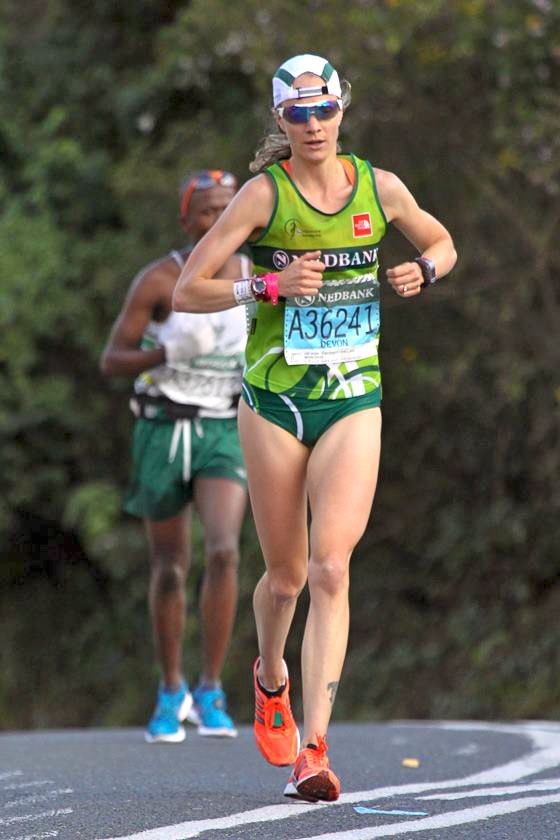
5. American Devon Yanko’s (third photo) Comrades journey began back in 2012 when she came fifth on debut. She then took a four-year break from the race but returned over the last two years to earn another two gold medals. She won the Oaklands Marathon in a time of 2:43 in March. An accomplished runner who knows what it takes push for a win.
Should the winner in either the Men’s or Women’s races in this year’s Comrades break the ‘Up Run’ Best Times of Russia’s Leonid Shvetsov (2008 – 5:24:49) or Elena Nurgalieva (2006 – 6:09:24) respectively, he or she will take home a minimum of R1-million ($66,849US) in Comrades prize money, comprised of a first prize of R500,000 plus a R500,000 incentive for breaking the Best Time; in addition to prizes for First South African (R200,000) and First KZN Man and Woman (R45,000).
Login to leave a comment
Comrades Marathon
Arguably the greatest ultra marathon in the world where athletes come from all over the world to combine muscle and mental strength to conquer the approx 90kilometers between the cities of Pietermaritzburg and Durban, the event owes its beginnings to the vision of one man, World War I veteran Vic Clapham. A soldier, a dreamer, who had campaigned in East...
more...Three Time Napa Valley Marathon Champion Racing Again
Login to leave a comment





